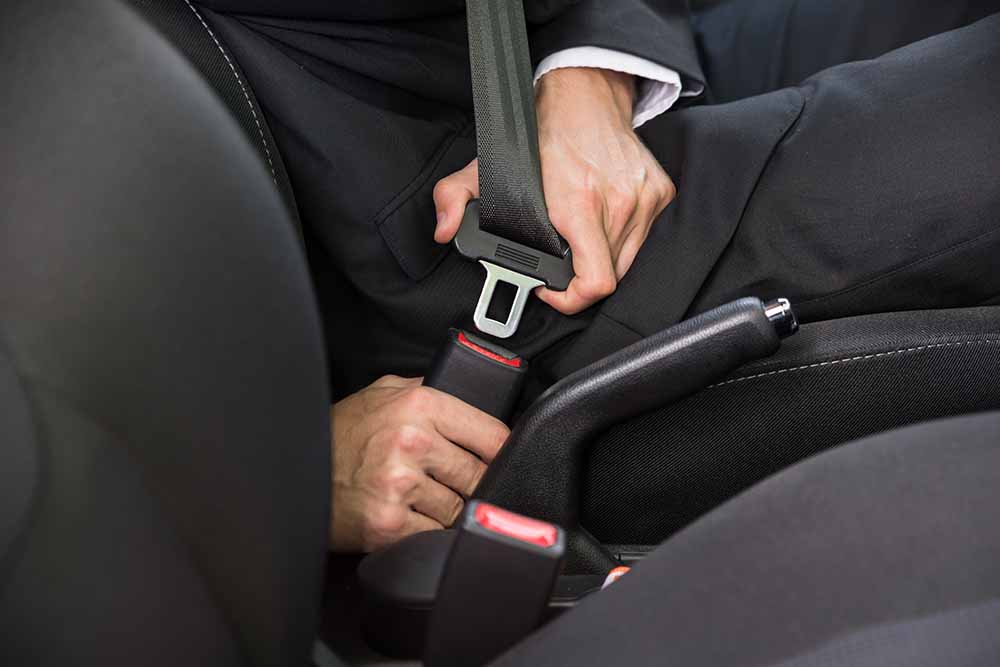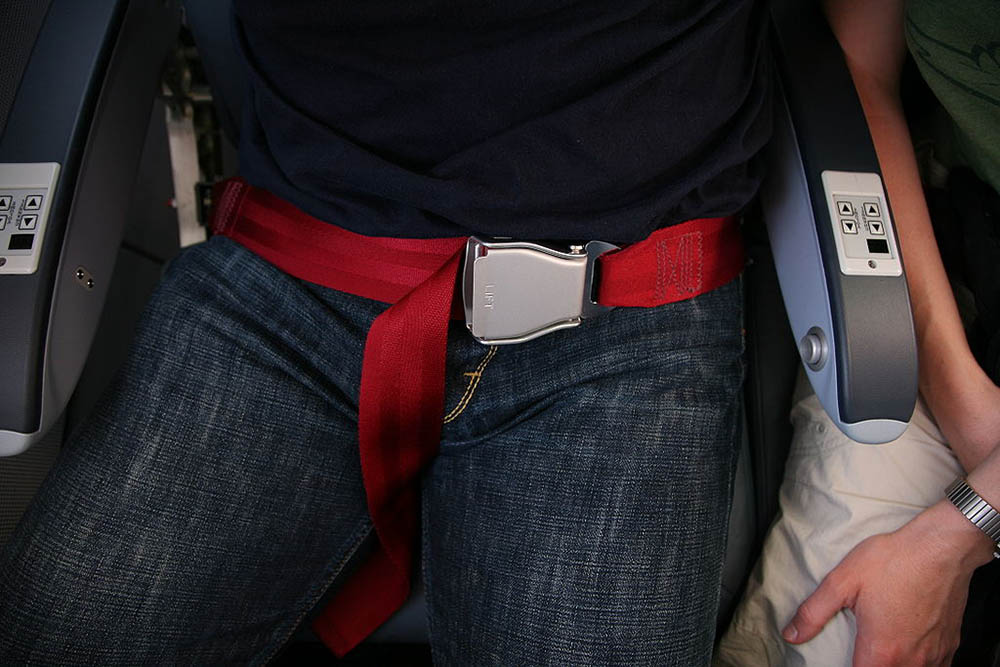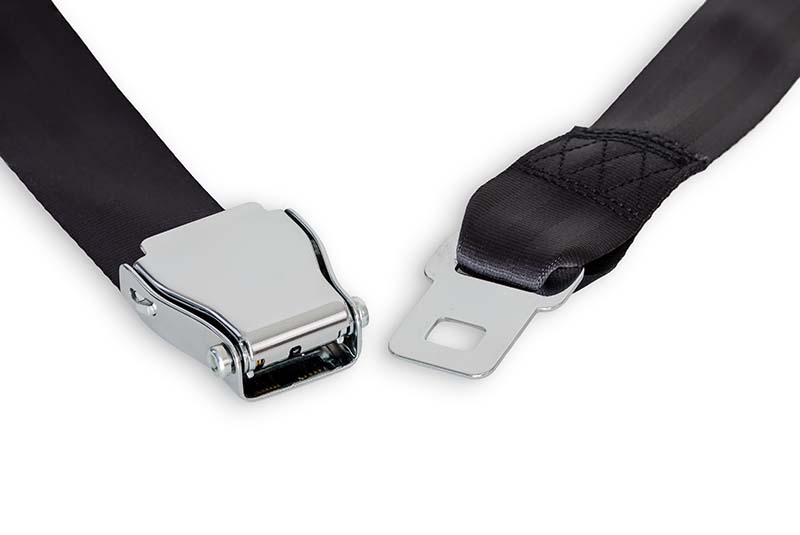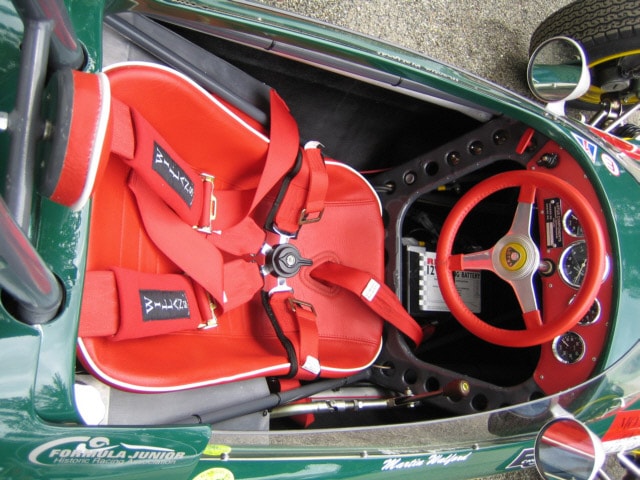8 Common Types of Seatbelts (with Pictures)
-
Jeff Weishaupt
- Last updated:

Seatbelts didn’t exist until 1959, and many vehicles were on the road without this necessity. However, people soon realized the importance of protecting the lower and upper body while driving, which made companies create the first three-point seatbelt.
Besides saving lives and preventing injuries, wearing a seatbelt can help you avoid a traffic ticket. This article looks at eight different types and explores how each can help you stay safe on the road.
The 8 Common Types of Seatbelts
1. Two-Point Seatbelts

This seatbelt has two ends and two mounting angles located on each side of the belt. Also known as a lap belt, a two-point seatbelt settles on the user’s lap and is typically found on airplanes.
2. Three-Point Seatbelts
Lap belts were the main deal until the 1980s when researchers discovered their loopholes. These belts could cause paralysis and also lead to seat belt syndrome. Considering these revelations, almost all nations decided to revisit and amend their driving safety guidelines.
They made sure that three-point seatbelts should be present in all automobiles. This is because these belts spread the energy a passenger might feel during an accident. A three-point seatbelt combines a sash and lap belt, forming a Y shape when buckled up.
3. Sash Seatbelts

A sash belt is similar to a lap belt but goes diagonally, crossing your chest and buckling up on the vehicle’s center. Initially, sash belts were just sold as an accessory with lap belts because their installment wasn’t necessary for a long time.
However, soon with the invention of three-point seatbelts, they became pretty important.
4. Built-in-Seat
A common type of three-point seatbelt, the Built-in-Seat system is commonly found in cars such as Range Rover. Instead of the shoulder belt being connected to the vehicle’s frame, the system is directly attached to the car’s passenger seat.
Front seats with Built-in-Seat systems are quite popular in vintage vehicles. That said, most newly developed and modern Built-in-Seat systems demand connection and installation with the vehicle’s electrical network to work correctly.
5. Five-Point Seatbelts

Most race vehicles and children’s safety seats have five-point seatbelts. These five-point harnesses feature a lap belt, shoulder belt, and belt between the user’s legs and the seat itself. A five-point seatbelt has its buckle in the center and helps distribute the impact of an accident to different parts of the body.
6. Automatic Seatbelts
These were introduced in the 1980s and designed to work as soon as the engine starts or the vehicle’s door closes. An automatic seatbelt may have an automatic lap belt, shoulder belt, or an entirely automatic three-point seatbelt system.
7. Seven-Point Seatbelts

This seatbelt isn’t found in cars but is a significant component in an aerobatic aircraft. A seven-point seatbelt has a five-point harness combined with an extra lap belt attached to the plane.
8. Seatbelt Airbags
These new and modern seatbelts bring together a great combination of an airbag and a safety belt. Also known as an inflatable seatbelt, this type provides excessive protection to the passenger in case of an accident.
That said, seatbelt airbags are pretty complicated to install in a vehicle. Moreover, you should read all the instructions carefully before setting one up. A small mistake may cost you a lot.
Seatbelt Safety Tips
A seatbelt can provide you with the much-needed security you may require while driving or riding on a vehicle.
- Make sure that everyone in your vehicle wears a seatbelt before riding or driving in a car.
- When wearing a lap belt, ensure it settles below your stomach area and across your hips.
- Your shoulder belt should be above your collarbone and must cross the chest. Please keep it away from your neck and adjust it to improve its fit and height.
- A seatbelt should always keep you at a safe distance from the airbag and the car’s dashboard.
- The safety belt must be snuggled against the hips for all pregnant women riding a vehicle. Loose belts can, unfortunately, break ribs and may injure the stomach. Also, the lap belt should never be worn on the stomach.
- Finally, children should never be allowed to sit in the front seat, with or without a seatbelt. They can only sit in front after turning 13 years old.
Conclusion
If you care for yourself and the lives of other passengers in your vehicle, make sure everyone wears a seatbelt while driving or riding a car. This necessity can’t be ignored because prevention is always better than cure. Above we have shared eight types, so you know which works well for you.
- See also: How to Trim a Cactus: 5 Tips & Tricks
Featured Image Credit: Popov, Shutterstock
Contents
